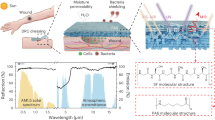Abstract
A RECENT communication1 described the lighting arrangements in a growth-cabinet with radiation having a spectral energy distribution and intensity equivalent to sunlight at 2,000 lumens per sq. ft. By installing more powerful lamps, this intensity has been substantially raised; but field experiments indicate that it is still below the maximum to which many plants will respond. A quantitative understanding of the morphological and physiological changes at intensities approaching full sunlight is not only of theoretical interest, but also has immediate bearing on a number of pasture problems of considerable economic importance. The xenon arc lamp announced by Aldington2, and the more recently developed air-cooled designs3, appeared to have definite possibilities for meeting this requirement.
This is a preview of subscription content, access via your institution
Access options
Subscribe to this journal
Receive 51 print issues and online access
$199.00 per year
only $3.90 per issue
Buy this article
- Purchase on Springer Link
- Instant access to full article PDF
Prices may be subject to local taxes which are calculated during checkout
Similar content being viewed by others
References
Mitchell, K. J., Nature, 166, 35 (1950).
Aldington, J. N., Trans. Illum. Eng. Soc., 14, No. 2 (1949).
Cumming, H. W., Light and Lighting, 43, No. 3 (March 1950).
Author information
Authors and Affiliations
Rights and permissions
About this article
Cite this article
CUMMING, H., MITCHELL, K. Application of the Xenon Arc-Discharge to Experiments in Crop Physiology. Nature 167, 567–568 (1951). https://doi.org/10.1038/167567b0
Issue Date:
DOI: https://doi.org/10.1038/167567b0
Comments
By submitting a comment you agree to abide by our Terms and Community Guidelines. If you find something abusive or that does not comply with our terms or guidelines please flag it as inappropriate.



